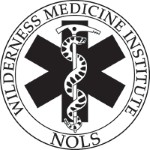Student medics volunteer to man the front lines
By Corydon Ireland
Democrat and Chronicle
Underneath the expansive student health center at the Rochester Institute of Technology -- with its 13 examining rooms and full-time physicians -- is a little-known campus health-care asset.
The RIT Ambulance Corps, with 45 student volunteers, speeds to up to 1,000 calls a year: sprains, heart attacks, diabetic reactions, stomach pain, the flu, seizures, cuts and bone breaks.
"We get the same (calls) you get in the community," says E. Cassandra Jordan, director of the health center, whose office is just above the ambulance bay.
The corps was certified by the state in 1982, and it had started a decade earlier with a few students carrying first aid kits and two-way radios around campus.
This is a quiet Tuesday. Peggy Neagle, a 20-year-old senior physician's assistant student from Connecticut, is the emergency medical technician on duty. Rich Miller, a 20-year-old computer science major from Pawling, Dutchess County, is the "crew tech" monitoring the radio for calls from campus security.
Before long, Stephen Pacholski -- the corps' 20-year-old chief -- walks through the door, his jump bag in hand. It's something every "medic" in the group keeps close by: a satchel stuffed with sterile water, bandages, scissors, airway kits and other first-responder gear.
Arrayed on his belt is the standard equipment that corps members have as they walk around campus, alert to -- in their parlance -- "jump a call": a voice pager and a two-way radio. The minimum time volunteers are on duty is 12 hours a month, though most do more -- and some log 100 hours every 30 days.
Most calls involve "minor trauma," says Pacholski, an information technology major (and volunteer firefighter), from Coventry, Conn. But everyone has a war story: a dark foray into an ice storm, or a teenager with heart attack-like symptoms.
Some days the calls are what you might expect on a college campus. "We have our share of intox people on the weekends," he says. Corps members evaluate the drinkers to rule out alcohol poisoning.
Neagle checks on the corps' gleaming 1996 Ford Wheeled Coach ambulance, parked in the bay. To get there, you pass through the rest area, where overnight crews can crash on one of two bunk beds or play video games.
Inside the ambulance, up a high steel step, is a miniature trauma center: gurney, blankets, jump bag, oxygen hookup, airway kit, locked shelves of medicines, a sharps disposal box, a telephone and a powerful ceiling light. In the cockpit-like driver's compartment are radios, a cell phone and a computer. In outside compartments are back boards and other big gear.
Corps drivers get special training to maneuver the big vehicle, dodge traffic and work the sirens and lights.
Signing up with the corps as a freshman "turned out to be the best decision I ever made," says Neagle.
She met her best friend, her boyfriend and a small family of buddies that helps make a big campus small. "It's insane how close we are," she says.
Neagle also gets invaluable experience for her career. But most corps members are studying fields unrelated to medicine, including business, computer technology and the arts.
"We run the gamut," says Jordan. "Altruism," she adds, keeps the corps alive.
CIRELAND@DemocratandChronicle.com

